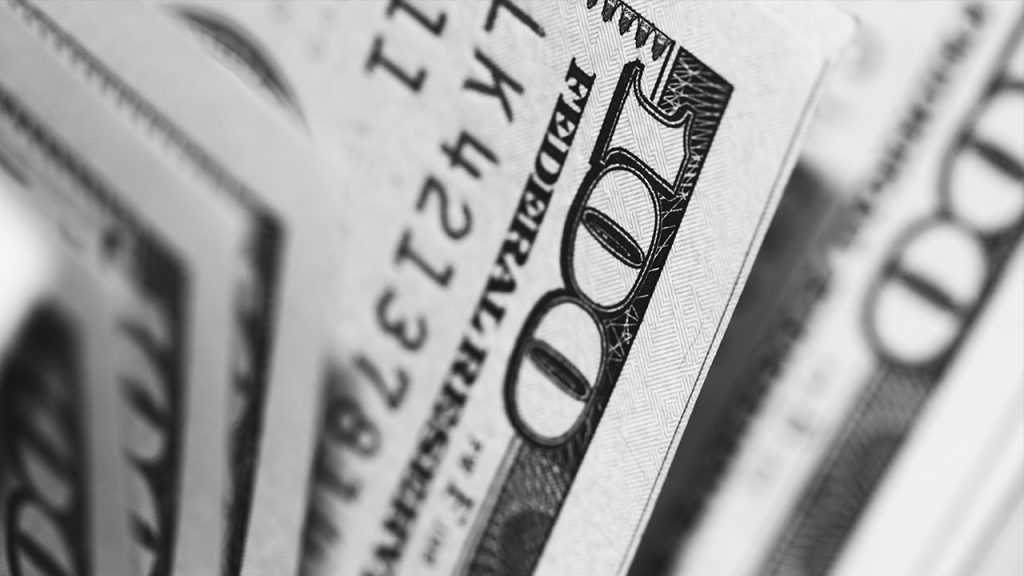
Berkshire Fine Spinning Associates is Formed
Berkshire Fine Spinning Associates Inc. incorporated under Massachusetts laws in 1929 as a consolidation of Berkshire Cotton Manufacturing Co., Valley Falls Co., Coventry Co., the Greylock Mills, and Fort Dummer Mills. The company changed its name to Berkshire Hathaway in 1955 when it acquired Hathaway Manufacturing Co. Berkshire Fine Spinning Associates Inc. manufactured fine grades of cotton textiles and specialized in fine lawns, batistes, nainsooks, organdies, dimities, handkerchief cloths, broadcloths, oxfords, sateens, rayon and silk mixtures. Plants were located in New Bedford, Massachusetts. Berkshire offered 33,000 shares of common stock in 1929 at $40 per share as well as 4,860 shares of 7% Preferred stock, also at $40 per share. Unfortunately, the shares were offered in the middle of the 1929 bull market, and the share price collapsed soon after. In November 1929, the ask price for Berkshire stock was still at $40, but in November of 1931, shares sank to $0.50. Sales for the company declined and Berkshire ran losses until 1936. As late as 1940, shares traded as low as $3, but profits and the share price picked up with the war. Berkshire did well enough that it was able to reinitiate a regular dividend in 1942 (the dividend had been suspended in March 1930), and in September 1947, the company had a 3-for-1 split. Of course, the split marked the high mark for Berkshire and the stock began a downward trend that lasted until 1962. The graph below shows the performance of Berkshire Hathaway Inc. stock from 1929 until 1967 when Warren Buffett took over the company. As you can see, there was little change in the stock price in the forty years before then. Berkshire lost money between 1930 and 1936, and it lost money in 1957, 1958 and 1961 to 1963. Despite the fact that sales had tripled between the 1930s and the 1960s, there was no comparable increase in profits. In 1963, Berkshire stock was still trading below the price it had been offered at in 1929!Buffet Buys Berkshire
Buffett began buying shares in Berkshire Hathaway at less than $8 in 1962 and by 1966, Buffett and his partners had taken over the company.As soon as Buffett took over Berkshire, he began focusing on insurance and other businesses rather than textiles. Buffett had invested in American Express when Anthony de Angelis’s fraud caused the price of American Express to drop dramatically in 1964. In the 1970s, Buffett expanded his investments to include media companies (The Washington Post and ABC) as well as other companies that fit his investment criteria. The final Berkshire mill was closed down in 1985.Berkshire Booms
The impact of Buffett on Berkshire was incredible. Shares in Berkshire which had gone nowhere for 40 years began increasing at a rapid pace. The stock closed at $18.625 in 1966. Shares first broke the $100 mark in 1977, the $1000 mark in 1983, the $10,000 mark in 1992 and the $100,000 mark 2006. Shares now trade around $200,000. Buffett could have bought any company and the results would have been the same. As soon as Buffett took over Berkshire Hathaway, he began to focus on other businesses and ignore the company’s core manufacturing business. In fact, at one point, Buffett said that buying the textile business had been the worst trade of his life. I guess everyone is allowed one mistake. One question I often receive about the data for the Germany is why the German stock and bond indices had a 90% decline in June 1948. At first, people think there is an error in the data, but German shareholders actually did lose 90% of their capital as a result of the Currency Reform of June 20, 1948 when Reichsmark were converted into Deutschemark.
Despite the loss, the reform benefitted shareholders. who were unable to sell their stocks at the fixed prices the Nazis had imposed during the war. Although the Currency Reform imposed an immediate loss on all shareholders and bondholders, the Reform helped West Germany to emerge from the economic collapse of World War II and begin the Wirtschaftswunder (Economic Miracle) that enabled Germany to enjoy the economic growth that occurred in the decades that followed.
One question I often receive about the data for the Germany is why the German stock and bond indices had a 90% decline in June 1948. At first, people think there is an error in the data, but German shareholders actually did lose 90% of their capital as a result of the Currency Reform of June 20, 1948 when Reichsmark were converted into Deutschemark.
Despite the loss, the reform benefitted shareholders. who were unable to sell their stocks at the fixed prices the Nazis had imposed during the war. Although the Currency Reform imposed an immediate loss on all shareholders and bondholders, the Reform helped West Germany to emerge from the economic collapse of World War II and begin the Wirtschaftswunder (Economic Miracle) that enabled Germany to enjoy the economic growth that occurred in the decades that followed.
Nazi Economics
During the 1940s, the German government organized its economy with one goal in mind: to win the war. As in the United States, the government made sure that all goods essential to the war were acquired by the government at a reduced cost. The prices of consumer goods were controlled in order to limit inflation, but the inevitable result was a black market in scarce consumer goods.Not only were price controls imposed upon goods, but price floors were introduced for stocks and bonds, preventing securities from declining in value. A bombed out factory isn’t worth as much as a fully functioning factory, and industry was run to aid the war effort, not to make profits. If markets had been left to themselves, stock prices would have declined as the tide of the war turned against the Nazis. Since prices didn’t reflect the values of the shares, stock markets froze and trading dwindled until it was almost non-existent. Price floors had been introduced during World War I in London, New York, Berlin and other countries for good reason. Although stocks traded at full price, market makers only had to put up a fraction of the cost of stocks, waiting until settlement days to balance their accounts. A steep decline in prices would have bankrupted many of the stock market’s traders, so the price floors were introduced to prevent panic selling. As a result of the price floors, trading in many securities stopped since no one was willing to buy shares for less than they were worth. Consequently, between January 1943 and June 1948 there was virtually no change in the German stock market index. The Nazi government remained in default on its own bonds until 1953, introduced multiple exchange rates, and imposed capital controls to stem the flow of money out of Nazi Germany.The War Ends and the Economy Collapses
After the war ended in Germany, the economic situation got even worse. The money supply had expanded five-fold between 1939 and 1945, but prices of many goods were fixed. Although ration coupons were used to allocate some goods, the amounts rationed were insufficient to meet daily needs, and consumers were forced to turn to black markets.
After the war ended, the occupying powers replaced the Reichsmark and Rentenmark with a Military Mark. Although the western Allies tried to limit the issue of Military Marks to control inflation, the Soviets were more than willing to print extra marks to pay for the rising costs of occupation. For political, rather than for economic reasons, the Western Allies gave copies of the plates for the Military Mark to the Soviets who began printing excessive amounts of the notes generating inflation. Having suffered from economic collapse and inflation after World War I, Germany was facing a second collapse that might have been worse than the hyperinflationary death spiral of the 1920s.
Replacing Nazi Economics with the Free Market
With the growing tension between the western Allies and the Soviet Union, the need to revive the German economy superseded the need to pacify Germany. The reform of the German currency and economy was overseen by Ludwig Erhard who wanted to replace the government-controlled Nazi economy with one based upon the market. Erhard had refused to support the idea of a centralized economy under Hitler, and his anti-Nazi credentials helped him to secure the support of the Allies over other German economists who wanted to maintain the government controls and rationing which clearly were impoverishing the nation. Erhard advocated the ending of price controls and a currency reform which would replace the Military Mark with a new currency with a limited money supply called the Deutschemark.By eliminating the Military Mark and replacing it with a smaller supply of Deutschemark while simultaneously eliminating all price controls, Erhard hoped to end both inflation and the shortages that plagued the economy. The Deutschemark were secretly printed in the United States and put in boxes that were innocuously labelled “doorknobs” so they wouldn’t arouse suspicion. Meanwhile, factories were instructed to withhold the distribution of their goods until the currency reform was introduced so the flood of goods into stores would help the economy to revive as quickly as possible. On June 20, 1948, the currency reform was introduced. Germans, who had gone to bureaucratic offices to pick up their ration coupons, instead received 40 Deutschemark in the new currency and an additional 20 Deutschemark soon after. Germans were allowed to exchange a limited amount of their Military Marks into Deutschemarks, but most of their money was lost. Now goods would be rationed by Deutschemark, not by ration coupons.
Stocks and bonds were converted from Reichsmark into Deutschemark at the rate of 1 to 10. A bond or stock that had been worth 100 Reichsmark was now worth 10 Deutschemark. In effect, the government imposed a 90% loss on all securities. This is why GFD’s German stock and bond indices show a 90% drop in 1948.
Though investors suffered losses, consumers were ecstatic. The effect of the currency reform was immediate. Within a week, store shelves were full, black markets were eliminated, and economic stability returned to Germany. The politics, however, were not so simple.
Germany Separates into West Germany and East Germany
The Ostmark was introduced in East Germany and continued to circulate in East Germany for the next forty years. Although the official exchange rate between the Ostmark and Deutschemark was set at one-to-one, the Ostmark always traded at a discount. I remember when I visited East Berlin in 1986, the black market rate was 5 Ostmark to the Deutschemark, but visitors to East Berlin had to exchange 25 Deutschemarks for 25 Ostmarks (which looked like monopoly money) as the price of entering East Berlin to see the walls of Babylon at the Pergamum Museum. The Ostmarks had to be spent in East Berlin, and since I was thirsty, I bought a glass of Vita Cola, the East German version of Coca-Cola, a drink which made cod liver oil taste delicious by comparison. Vita Cola kept the formula for their soft drink secret, but more likely to protect the rest of the world rather than to hide trade secrets.
 One of the most dramatic events in the financial history of Victorian England was the collapse of Overend, Gurney and Co. Its failure had a more severe impact on the London financial market than the collapse of Bear Stearns had on U.S. markets over 140 years later. During the financial crisis of 1866, over 200 firms went bankrupt, including a number of banks. The failure of Overend, Gurney and Co. also led to one of the first trials for financial fraud in history when all six directors were brought before the courts of London to answer for their alleged crimes.
One of the most dramatic events in the financial history of Victorian England was the collapse of Overend, Gurney and Co. Its failure had a more severe impact on the London financial market than the collapse of Bear Stearns had on U.S. markets over 140 years later. During the financial crisis of 1866, over 200 firms went bankrupt, including a number of banks. The failure of Overend, Gurney and Co. also led to one of the first trials for financial fraud in history when all six directors were brought before the courts of London to answer for their alleged crimes.
Quaker Origins
When Limited Liability Adds Insult to Injury
Overend, Gurney & Co. stock started trading on August 21, 1865, and hit a high of 22.5 on November 16, 1865. As the price rose, investors who had missed out on the initial offering bought shares, keeping the price around 20; however, they were unaware of the rot that lay beneath the façade of the bank. By the end of February, 1866, shares still traded above 20, but began to drift down, falling below 15 by late April. In April, the investment in the Millwall Iron Works on the Isle of Dogs began unravelling, producing £500,000 in unexpected losses for the bank. The financial markets in London were reaching the heights of a small bubble, and the Bank of England responded by raising the lending rate from 6 per cent to 7 per cent on May 3, to 8 percent on May 5 and to 9 per cent on May 11 and 10 percent on May 12. As money tightened, Overend tried to raise capital by collecting on debts owed to it by the Mid Wales Railway and others, but when the bank was unable to get this money, it became evident that the bank would soon become insolvent. Overend’s only alternative was to go to the Bank of England, which as lender of last resort, could have bailed out Overend, Gurney and Co. However, the Bank of England declined, not because allowing Overend to fail would reduce the amount of competition the Bank of England had, but because Overend was in such poor shape that no amount of money could have saved it. On May 10, 1865, the bank announced that it was suspending payment on deposits. The price of the stock had closed at 10 on May 10, fell to 3.5 on May 11 and to 0.5 on May 12. Until then, few had suspected that the greatest name in wholesale banking could have collapsed so suddenly. If Overend, Gurney & Co. was unsafe, could any bank be safe? A financial panic ensued and during the next few months, over 200 companies, including many banks, failed as well.
For the shareholders, the worst was yet to come. The bank had issued shares at a par of £50, only requiring £15 of paid in capital before going public. Since the bank still had many outstanding liabilities, the shareholders were liable for these, though only to the extent of the par value of the shares. Still, this meant that not only had shareholders lost all they had invested in Overend, Gurney & Co., but now they would be required to pay an additional £35 to a bankrupt company to help cover outstanding liabilities.
Although some shareholders made legal challenges to this demand, the courts said a contract was a contract and shareholders had to pay the additional £35 (equivalent to about $7500 in today’s money) even though they would never get anything back. Can you imagine how shareholders in Bear Stearns would have reacted if, after losing everything, they had been required to send in an additional $7500 for each share they owned even though the company was already bankrupt?
The End of Overend
The failure of Overend, Gurney and Co. inspired writers for years to come. Anthony Trollope used one of the swindlers involved in the collapse for his novel, The Way We Live Now, Bagehot frequently referred to the Overend fiasco in his book Lombard Street, and Karl Marx used the Overend collapse as a symbol of all that was wrong with capitalism. Just as no one from Wall Street went to jail as a result of the collapse of Bear Stearns, other companies, and the billions of dollars in losses that occurred during the 2008 financial meltdown, no one from Overend, Gurney and Co. was convicted of any crimes. In fact, the Norwich Gurney bank continued to operate even after shareholders had been fleeced of their money since the bank had been legally separated from Overend, Gurney and Co. when it became a limited liability company. As the French say, plus ça change, plus c’est la même chose. The more things change, the more they stay the same. Today, banks may pay billions in fines to the government for their misdeeds, but no banker goes to jail. If only criminals worked for billion-dollar corporations, we wouldn’t have to build any prisons. The government of Zimbabwe announced this week that they were finally demonetizing the Zimbabwe Dollar. Although the United States Dollar replaced the Zimbabwe Dollar in every day transactions back in 2009, banks still carried accounts that were denominated in Zimbabwe Dollars. Beginning on June 15, 2015, for only 35 quadrillion (35,000,000,000,000,000) Zimbabwe Dollars bank customers will receive one free portrait of George Washington. This opportunity expires in September.
Believe it or not, Zimbabwe will not get in the Guinness Book of World Records for the most insane currency conversion. Hungary holds this dubious record because 400,000 quadrillion pengo were required to obtain one forint back in 1946 when Hungary went through its own currency conversion.
The government of Zimbabwe announced this week that they were finally demonetizing the Zimbabwe Dollar. Although the United States Dollar replaced the Zimbabwe Dollar in every day transactions back in 2009, banks still carried accounts that were denominated in Zimbabwe Dollars. Beginning on June 15, 2015, for only 35 quadrillion (35,000,000,000,000,000) Zimbabwe Dollars bank customers will receive one free portrait of George Washington. This opportunity expires in September.
Believe it or not, Zimbabwe will not get in the Guinness Book of World Records for the most insane currency conversion. Hungary holds this dubious record because 400,000 quadrillion pengo were required to obtain one forint back in 1946 when Hungary went through its own currency conversion.
The Zimbabwe Dollar Is Born
Zimbabwe was originally a British colony known as Rhodesia, named after Cecil Rhodes who obtained a mining concession from a local king. The colony of Rhodesia declared its independence on November 11, 1965, but because it did not allow blacks any representation in the government, Britain imposed sanctions against Rhodesia. On March 3, 1978, Ian Smith signed an agreement to provide black majority rule in Rhodesia. The country was renamed Zimbabwe Rhodesia on June 1, 1979, and Zimbabwe declared its independence on April 17, 1980. The country’s currency was originally the Rhodesia Pound which was introduced at par with the British Pound Sterling. The Rhodesia Dollar (RHD) replaced the Rhodesia Pound on February 17, 1970 with 2 Rhodesia Dollars equal to 1 Rhodesia Pound. The Zimbabwe Dollar in turn replaced the Rhodesia Dollar at par on April 18, 1980. When this conversion occurred, a Zimbabwe Dollar was valued at 1.47 United States Dollars, but because Zimbabwe had higher inflation than the United States, the Zimbabwe Dollar steadily depreciated against the U.S. Dollar.Inflation Explodes
The combination of decreases in farm production following large land redistributions, a decline in the production of goods, a collapse of the banking system, involvement in the Second Congo War in 1998, and a drought in 1999, led to a steady decline in production. Zimbabwe suspended foreign debt repayments in February 2004, resulting in compulsory suspension from the IMF. This combined with sanctions imposed by the United States, the IMF and the European Union led to large budget deficits which could only be covered by printing money, eventually leading to hyperinflation. The inflation rate in Zimbabwe averaged around 10% in the 1980s, around 20% to 30% between 1990 and 1997, and 50% between 1998 and 2000. In 2001, the inflation rate exceeded 100%, and in 2003 it was almost 600%. At that point, hyperinflation kicked in. Inflation rose to 1281% in 2006, and 66,000% in 2007. In 2008, the money supply grew by 658 billion percent and inflation hit an annualized 80 billion trillion percent (89,700,000,000,000,000,000,000) toward the end of 2008. At that point, Zimbabwe Dollars were about as valuable as toilet paper.Hyperinflation Makes Life Miserable
The main cause of Zimbabwe’s inflation was the excessive money growth of the Zimbabwe Dollar, but officials tried to place the blame elsewhere. In 2007, for example, Zimbabwe declared inflation illegal (!), outlawing price increases on some commodities. The government even arrested some executives for increasing prices on commodities. Other problems occurred. People found it difficult to take money out of ATM machines because the ATMs couldn’t handle values in billions and trillions. Customers received a “data overflow error” and weren’t able to withdraw anything. By the time the ATM machines were fixed and the ATMs allowed customers to withdraw Z$100 billion per day, that amount wasn’t enough to cover the cost of a loaf of bread. If a customer wrote a check to purchase something, they were required to write the check for twice the cash price of the item to cover the impact of inflation by the time the check cleared. During the 2000s, Zimbabwe went through four currencies in four years. On July 31, 2006, Zimbabwe introduced a new Dollar with 1000 old Zimbabwe Dollars (ZWD) equal to 1 Second Zimbabwe Dollar (ZWN). On August 1, 2008, 10 zeroes were removed with 1 Third Zimbabwe Dollar (ZWR) equal to 10 billion Second Zimbabwe Dollars. On February 2, 2009, a Fourth Zimbabwe Dollar (ZWL) was introduced, removing 12 zeroes, with 1 Fourth Zimbabwe Dollar equal to 1 trillion Third Zimbabwe Dollars. Thus 1 Fourth Zimbabwe Dollar was equal to 10 trillion trillion (10,000,000,000,000,000,000,000,000) first Zimbabwe Dollars.Dollar One, Dollar Two, Dollar Three, Dollar Four
The hyperinflation produced a dazzling array of currency denominations. The highest denomination for the first Zimbabwe Dollar was 100,000 Dollars. When the first Zimbabwe Dollar was converted into the second Zimbabwe Dollar at 1000 to 1, paper currency equal to One Zimbabwe Cent was printed so old 10 Zimbabwe Dollar notes could be converted. Within a year, the Reserve Bank of Zimbabwe was printing a 100 Billion Dollar note. In total, 32 different denominations of the Zimbabwe Dollar were printed within one year.
The fourth Zimbabwe Dollar died a quick death, only reaching the Z$500 denomination before the currency was cast aside. Foreign currency was effectively legalized as a de facto currency on September 13, 2008, and on January 1, 2009, the Reserve Bank of Zimbabwe allowed U.S. Dollars to circulate freely throughout the country. The Fourth Zimbabwe Dollar remained legal tender until June 30, 2009 by which time it has lost 95% of its value in the five months of its existence. By then, transactions were almost exclusively in U.S. Dollars, the Zimbabwe Dollar having been abandoned.


